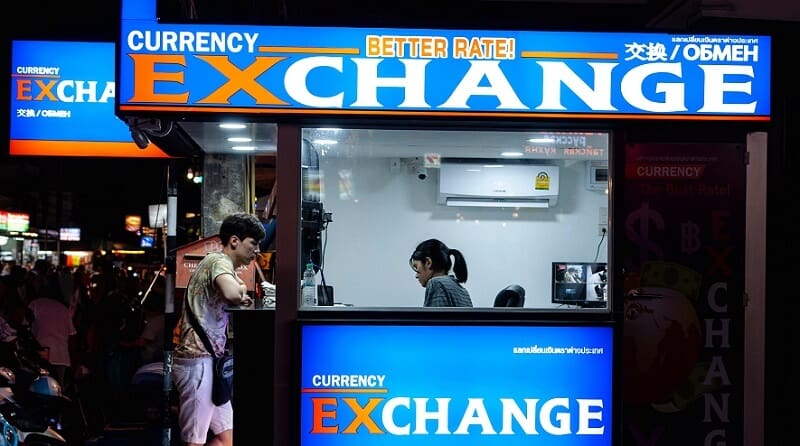
The Australian stock market history begins with six exchanges in Sydney (1871), Hobart (1882), Melbourne (1884), Brisbane (1884), Adelaide (1887) and Perth (1889).
The first Australian convention was held in 1901. At first, the exchanges attended on an unofficial base. In 1937 the Australian Associated Stock Exchanges (AASE) was founded. Every exchange had its representative. Over time the AASE set consistent listing laws, broker practices, and commission charges.
Trading was handled by a call system. An exchange worker called the names of each company and brokers bid or offered on each.
In the 1960s this turned to a post system. Exchange representatives called ‘chalkies’ wrote bids and offers in chalk on blackboards. They also registered transactions made.
The start of the modern Australian Stock Exchange history was in 1980 when the Melbourne and Sydney stock exchange indices were replaced by Australian Stock Exchange indices.
After that date, many changes followed. Very fast. So we can say that Australian stock exchange history is full of changes and improvements.
You might be interested in Leading Stock Exchanges In The World
Today, the Australian stock market is one of the most important.
This country with a small population became one of the biggest players in the global market.
There are a lot of facts about the Australian stock exchange that might be valuable for you. For instance, the Australian stock exchange is opened between 10 am and 4 pm AEST on working days.
The market opens in phases through the first ten minutes of trading.
To prevent the precise forecast of the first trades on the given day they established a chance factor into the opening.
The ASX closes between 4.10pm and 4.11pm with a single price auction. That price determines the closing prices on the given day.
The largest ASX broker is Macquarie Bank, one of the biggest Australian banks. Also, the dominant broker’s companies are Goldman Sachs, CSFB, UBS, Citigroup.
The man who broke the Bank of England
The ASX is a public company too. Its shares are traded on the ASX, of course. However, the corporation’s license limits the highest individual holdings to a small part of the company.
ASX is regulated by the Australian Securities and Investments Commission (ASIC).

Average daily turnover in ASX is A$5,6 billion and a market capitalization of approximately A$1.9 trillion. That makes it one of the world’s highest 15 listed exchange groups.
ASX is, let’s say that, similar to the Canadian markets. It has commodities focus. So, we can say that the Australian stock market is ‘heavy’ because of the high volumes of natural resources, such as minerals and metals, are traded.
Of the 2185 stocks listed on the ASX, approximately 33% are junior metals and mining stocks by number, but the whole Materials sector is about 15% of the ASX by index weight.
As a difference, financials are estimated for 5% of the number of stocks listed. But it is the biggest sector in the sense of market capitalization, and it is 36% of the index.
Stocks are classified into sectors according to their major business type: financials, materials, health care, industrials, etc.
How to buy and sell shares in the Australian stock market
The most common way to buy and sell shares is on the share market using a broker or service.
Also, you can buy shares through a prospectus when they are first placed on the market. You can buy or sell stocks indirectly over a managed fund. There is also always a way to buy shares through an employee share system.
If you are looking for the cheapest fees, an online trading account could be the right choice. The fee to buy or sell a package of shares starts from around $30. You are charged when you buy or sell a share.
Why modern German investors are rioters? Read HERE
If you use a full-service broker you will be charged more. But you will have some financial advice. For example, what to buy or sell and so.
Australian law dictates brokers to give fair recommendations. Brokers must inform you about any interests they may have in investment arrangements they suggest to you.
Brokerage fees are regularly expressed as a percentage of the price of the purchase or sale. For example, the fee on a transaction of up to $5000 will be 2.5%. For huge trades, it may be 0.1%.
Small trades worth a few thousand dollars can be moderately costly.
Companies may choose to offer their shares as a way of raising capital. This is an “initial public offering” or IPO.
In order to find if investing in IPO suits you, it is recommended to read the prospectus. There you can find all the important details about the company.
This document must be lodged with the Australian Securities and Investments Commission (ASIC). You can check it through ASIC’s OFFERlist database.
All prospectuses must include data on the features of the securities being offered. That includes how many are for sale, how you can demand to buy them. Also, the information about the company must be included. For example, its progress, and financial situation, and also, the risks connected with the offer.
You can sell the shares you hold by placing a trade online or over your broker.
When you sell your shares store a copy of the trade acceptance or receipt for tax purposes. That will be smart.
Arrangement for the sale and transfer of ownership befalls 2 business days after the trade takes place. This is well-known as T+2.
If you own shares in a managed fund and want to sell them, check if there are any withdrawal costs.
Who are the best Australian investors of all time



Leave a Reply